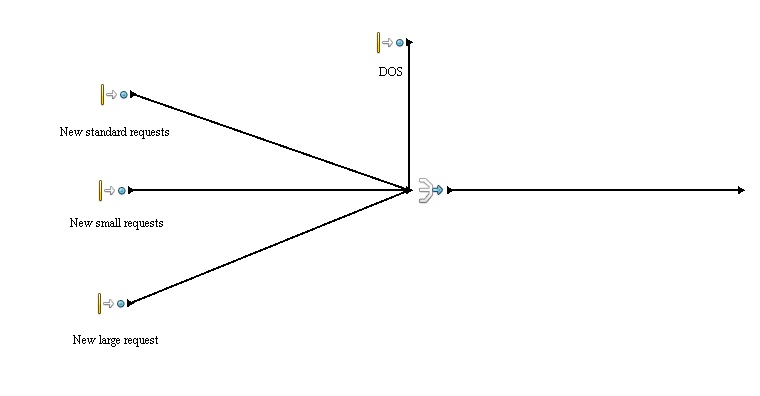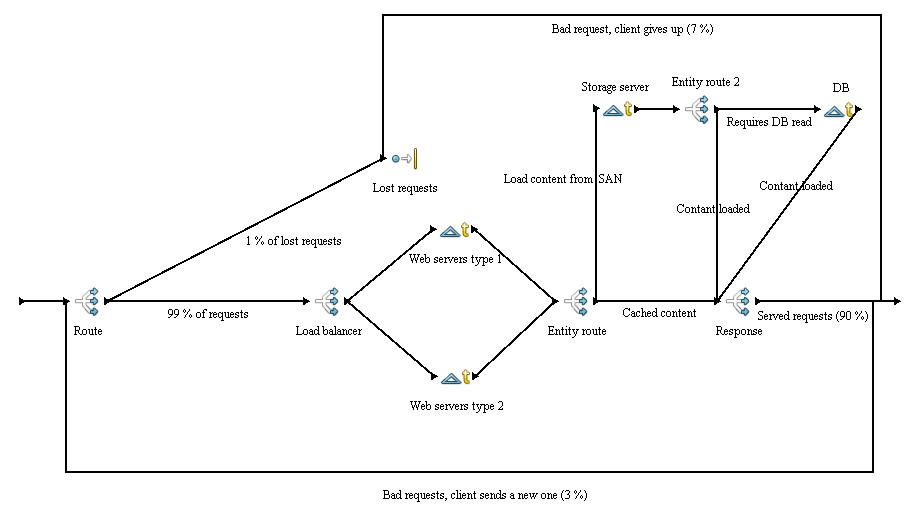Difference between revisions of "Load-balancing"
(→Problem definition) |
|||
| Line 1: | Line 1: | ||
| + | *'''Project name:''' Load-balancing | ||
| + | *'''Class:''' 4IT496 (WS 2015/2016) | ||
| + | *'''Author:''' Bc. Patrik Tomášek | ||
| + | *'''Model type:''' Discrete-event simulation | ||
| + | *'''Software used:''' SimProcess, trial version | ||
| + | |||
Introduction | Introduction | ||
Revision as of 16:59, 17 January 2016
- Project name: Load-balancing
- Class: 4IT496 (WS 2015/2016)
- Author: Bc. Patrik Tomášek
- Model type: Discrete-event simulation
- Software used: SimProcess, trial version
Introduction
Contents
Problem definition
A hosting company with it’s own infrastructure is using so called "load balancing" to distribute the overall load between multiple servers (hardware) and “high-availability” to minimize service down-time.
Load-balancing
short text here
High-avaibility
short text here
Anti-DoS/DDoS
short text here
Method
SIMPROCESS
Model
Entities
Small request
text
Standard request
text
Large request
text
D-DoS
text
Resources
Load-balancer
text
Web server
There are two types of this resource, each with different capabilities:
Type 1
Type 2
Storage server SAN
text
Database server
text
Radware DefensePro
text
Processes
HTTP requests




